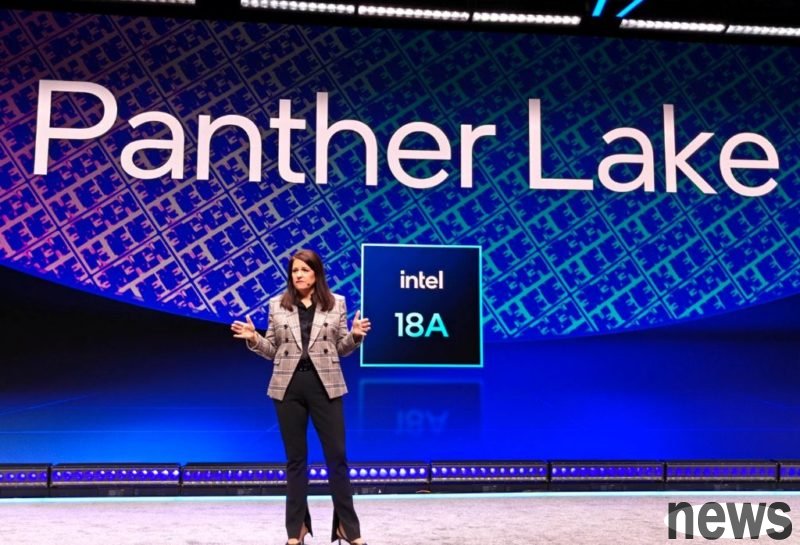
As the release date approaches, information about Intel’s new generation laptop processor “Panther Lake” continues to emerge. According to reports from Reuters and other foreign media, Intel recently held a closed briefing in Arizona to showcase the 18A process and new architecture design.
Panther Lake adopts Intel's Hybrid Multi-Tile Design architecture to integrate different process dies into the same package. According to industry news, the CPU tile uses Intel's own 18A process and introduces RibbonFET full surround gate transistor and PowerVia back power supply technology; the Graphic tile (GPU) is manufactured by TSMC N3E process, and the SoC / I/O tile uses TSMC N6 process.
In terms of architecture, the main die integrates 4 P-cores (Cougar Cove) and 8 E-cores (Darkmont), and 4 new low-power cores (LPE) are added to the SoC side, for a total of 16-core design. The graphics part uses the new generation Xe3 (Celestial) architecture. The high-end version is equipped with a 12-core GPU, and the number of cores is approximately 50% higher than the previous generation Lunar Lake Xe2 (Battlemage). The AI engine and media module have also been fully upgraded to support device-side AI inference and efficient image computing, and the overall power consumption is estimated to be reduced by approximately 30%.
Unlike Lunar Lake, which focuses on on-package memory, Panther Lake adopts an external RAM architecture to improve platform scalability and cost flexibility. Intel also launched a new naming system "Core Ultra X Series". The X9 and X7 models are equipped with a full 12-core Xe3 GPU, while the mid-range Ultra 5 is equipped with a 10-core configuration.
It will be mass-produced in the second half of 2025 and launched in early 2026. The Fab 52 factory in Arizona will be responsible for manufacturing the CPU tiles of the 18A process, and TSMC will provide N3E and N6 chip foundry. "Reuters" reported that the current Panther Lake yield rate is about 10%. Although it is significantly improved from 5% last year, it is still challenging to achieve stable mass production.
In addition to Panther Lake, Clearwater Forest and Nova Lake series will be launched one after another. Clearwater Forest uses the Intel 18A process to target the high-density server market and will enhance energy efficiency with a new multi-chip packaging architecture. Nova Lake is positioned as the main force in the new generation of mobile and desktop platforms. The CPU tile uses the Intel 18A process, while the Graphic tile and SoC tile are said to be partly manufactured by TSMC.
Foreign media previously reported that Intel has increased the proportion of outsourcing to TSMC in recent years and has launched at least one high-performance computing chip using the N2 process.
Intel to reveal tech details on forthcoming PC chip, sources say Intel's upcoming Panther Lake family will reportedly feature new Core Ultra X branding for fully-spec iGPU configs — Core Ultra 7 and 9 processors tipped to feature 12 Xe3 GPU cores The latest Intel Panther Lake CPU leak details next-gen Core Ultra 300 range with high-performance graphics restricted to a new ‘X’ model line